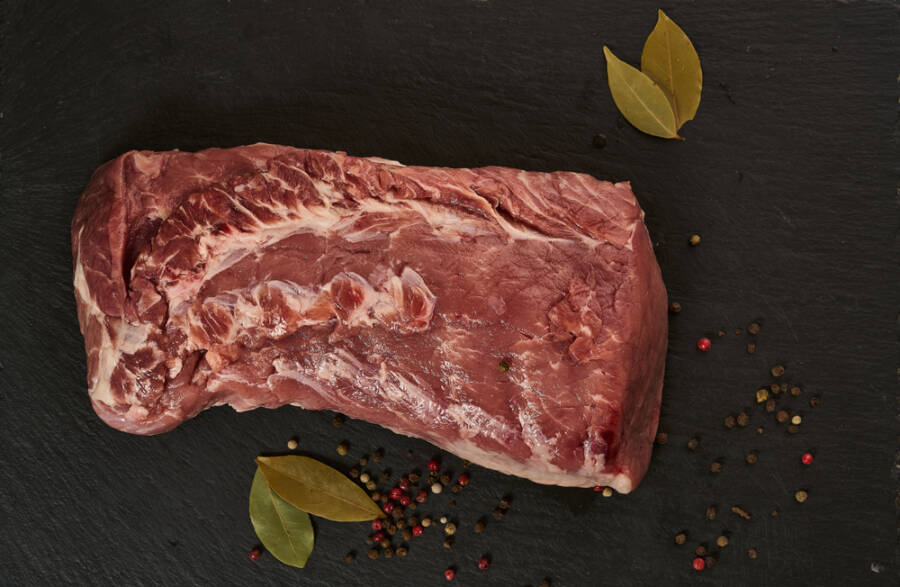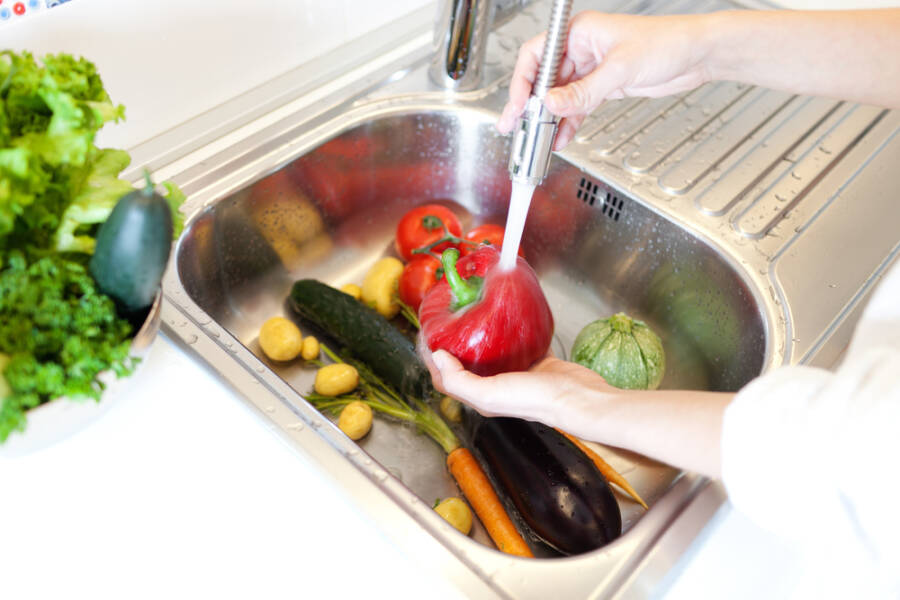Food poisoning is the main issue that can occur when you eat uncooked beef because it can be contaminated with harmful bacteria, viruses, parasites, or toxins. Unproperly cooked meat and poor food hygiene are contributing factors to food poisoning and bacterial infections that come with significant risks.
Don’t wait for a foodborne illness to strike before taking action. Start by reviewing and improving your food hygiene habits, and find out how to recognize trustworthy food providers. Educate yourself about the importance of proper food handling, and always keep yourself informed about food recalls.
Stay informed and find out about diseases and tips to keep yourself safe.

1. Salmonellosis
Raw or undercooked beef is the main cause of salmonellosis, an infection caused by a bacteria called Salmonella. This bacteria can live in the digestive tract of animals without making them sick. Contaminated beef will show the effects 12 to 72 hours later. The symptoms can be stomach cramps, watery diarrhea, and fever. They can last for 2 to 7 days. Unfortunately, some people recover completely after several months.
Severe cases bring the infection to an invasive disease, meaning that the bacteria can spread to other parts of your body other than the intestines. It can even reach the bloodstream, joints, and bones. The best prevention is to make sure your food is properly cooked to avoid any potential serious infections.
2. Campylobacteriosis Poisoning
Cattle and poultry are more likely to contain Campylobacter bacteria in their digestive tracts. Not cooking the meat properly will lead to food poisoning. Ingesting this bacteria can cause you to experience symptoms such as cramps, vomiting, nausea, fever, abdominal cramps, and diarrhea.
You can recover in 7–10 days, but there are some cases when the bacteria can spread to the bloodstream, and this is life-threatening, especially if your immune system is weak. Statistics show that one in every 1000 people who contract this bacteria develops Guillain-Barre syndrome, a condition that causes temporary paralysis that can last for several weeks to months. To avoid these scary conditions, cook your meat thoroughly and practice good hygiene when it comes to food to keep any harmful bacteria at bay.
3. Listeriosis
Listeria monocytogenes is a bacteria found in cattle, poultry, and soil. Eating raw or undercooked beef can expose you to this bacteria, leading to a Listeria infection. Eating raw or undercooked beef can expose you to Listeria monocytogenes that are commonly found in poultry, cattle, or soil. An infection caused by this bacteria will cause fever, headaches, body aches, watery diarrhea, and nausea.
The symptoms can get better in a few days, but there are certain groups with a high risk of developing an invasive disease, such as newborns, pregnant people, adults over 65, or people with a suppressed or weakened immune system.
In pregnancy, listeriosis can show up with flu-like symptoms that can lead to severe complications like preterm delivery, stillbirth, infection of the newborn, or even miscarriage. For the other high-risk categories, there are other complications and severe symptoms, depending on where the bacteria managed to spread. It can be dangerous and life-threatening when Listeria affects the bloodstream or the nervous system. Protecting yourself from such horror stories consists of cooking your beef thoroughly and practicing good food safety habits.
Other uncooked beef complications
Poorly cooked beef exposes you to a lot of bacteria and viruses that cause food poisoning. There are some others:
- Hepatitis-A virus
- Shigella
- Staphylococcus aureus
- Norovirus
These infections are not the only dangerous conditions you can have, and if you are unlucky, you can contract parasites such as beef tapeworm and giardiasis. These parasitic infections are particularly present in developing countries, where they have low food quality standards and poor sanitation. Minimize any risk by ensuring you follow good food practices, especially if you travel in areas known for food issues.

Is steak tartare safe to eat?
We associate steak tartare with French cuisine. Yes, it raises the same safety concerns as any raw and undercooked ground beef or meat. The USDA officially confirms that raw beef, including steak tartare, is not safe to eat because it doesn’t reach the 160°F that is necessary to kill harmful bacteria or parasites.
If you want to enjoy steak tartare safely, make sure the beef comes from reputable providers following strict food safety standards. Even with these precautions, consuming raw beef involves inherent risks.
It’s crucial to maintain high food hygiene to prevent foodborne illnesses. These are some methods to keep it up to standard.

- Wash your hands and cooking surfaces often. Use soap and warm water to wash your hands and insist for at least 20 seconds before and after dealing with food, especially after you cut raw meat or poultry or handled seafood and eggs. The surfaces should be cleaned with soapy hot water after preparing each food item, as well as the utensils and cutting boards.
- Always separate raw and cooked foods. To avoid cross-contamination, it is essential to use separate cutting boards or plates for raw meat, poultry, and seafood so that their juice doesn’t spill onto other foods. When you deposit them, make sure they are sealed in containers and keep them on the bottom shelf of the refrigerator to avoid their juices contaminating other foods.
- Use safe temperatures. To make sure you reach the right standard, you should use a thermometer that helps you cook the food to the right internal temperature and kills harmful bacteria. It’s recommended to cook poultry (chicken, turkey) at 165°F and ground meats such as beef, pork, or lamb at 160°F. Beef, pork, or lamb in steaks, chops, or roasts at 145°F with a 3-minute rest time, and fish at 145°F. Always check the temperature in different spots to see if it’s evenly cooked. You can find this ProfessionaI Meat Thermometer Digital on Amazon.
- Store them in the fridge fast. Refrigerate perishable foods, including cooked foods, cut fruits and vegetables, or leftovers. Keep your refrigerator below or at 40°F and the freezer at 0°F. Make use of sealed bags and airtight containers to store food and prevent cross-contamination.
- Thaw foods safely. It’s a better option to thaw frozen foods in the refrigerator and not on the counter because this keeps the food at a consistent and safe temperature. Another good method for thawing food more quickly is cold water. What you can do is place it in a leak-proof plastic bag and add it to cold water. Change the water every 30 minutes. You can also use the microwave to thaw food if you want to cook it immediately.
- Rinse fruits and vegetables under water before eating, cutting, or cooking them, including when you want to peel them. If you want to be safe from any harmful bacteria, you can opt for consuming only pasteurized milk, cheese, or juices. Avoid eating raw or undercooked eggs, and use pasteurized eggs for recipes that require raw eggs.
- Keep in mind to always stay informed about food recalls and safety alerts. The FDA or USDA will immediately announce any issue that can help you remove any recalled item from your kitchen.
Follow all these steps, and you will reduce the risk of food poisoning or illness by maintaining good food hygiene.
Read next: Get Excited for Meal Prep With These 3 Healthy Recipes







